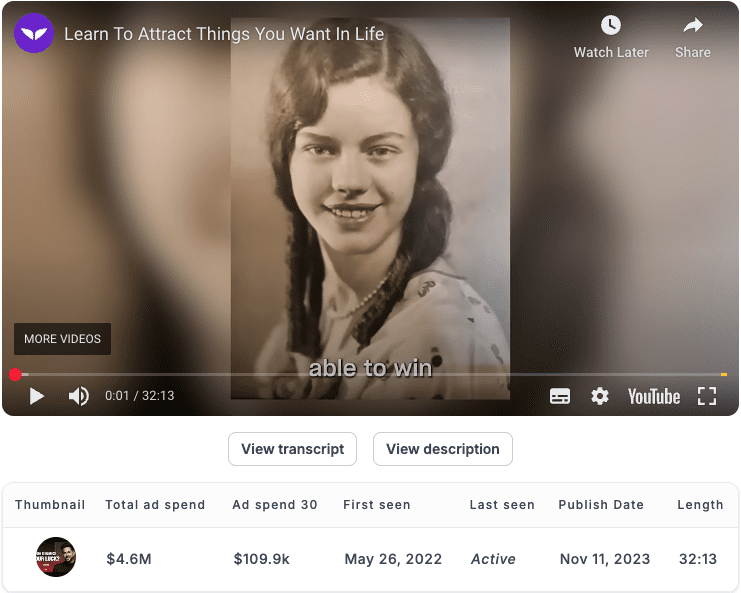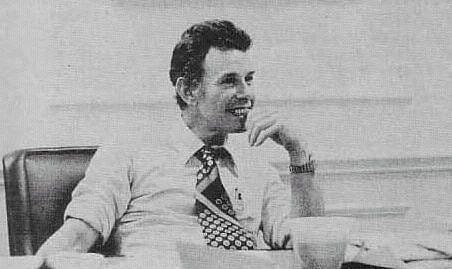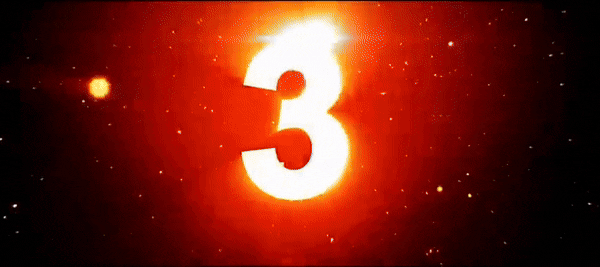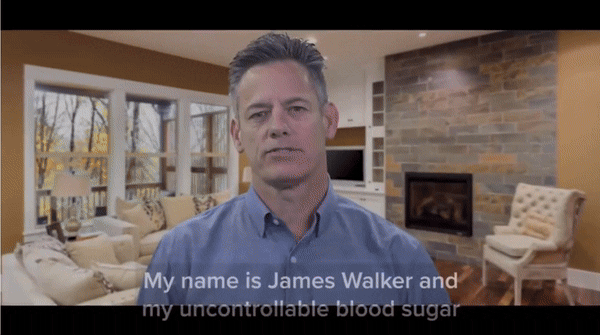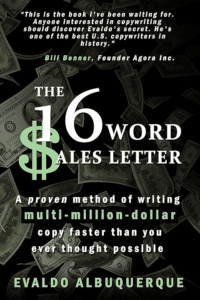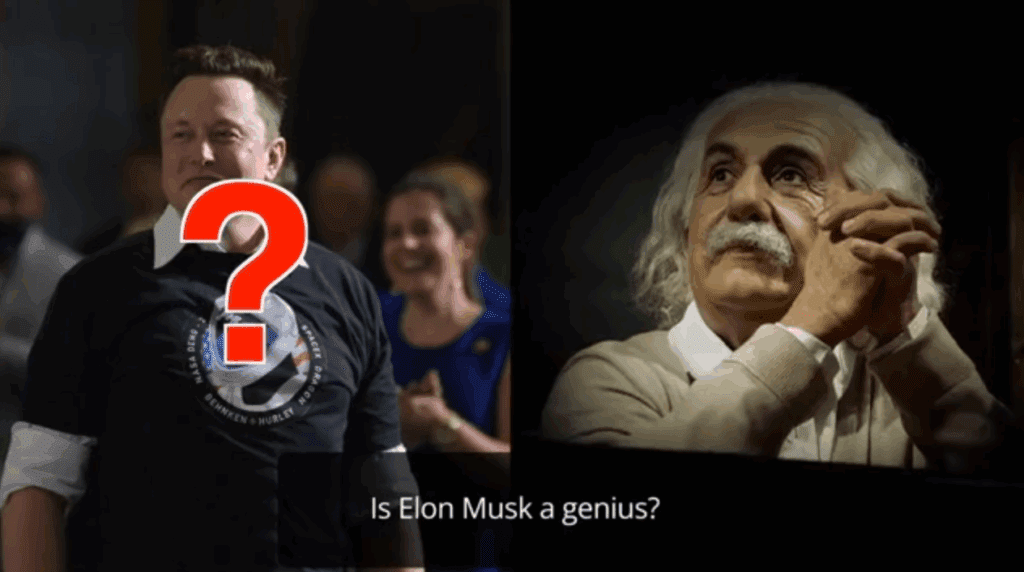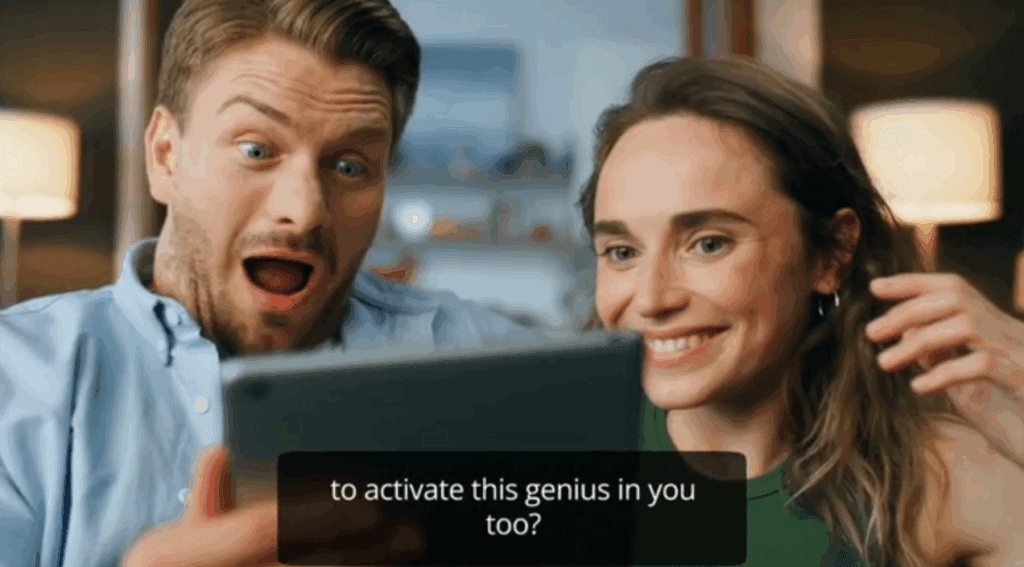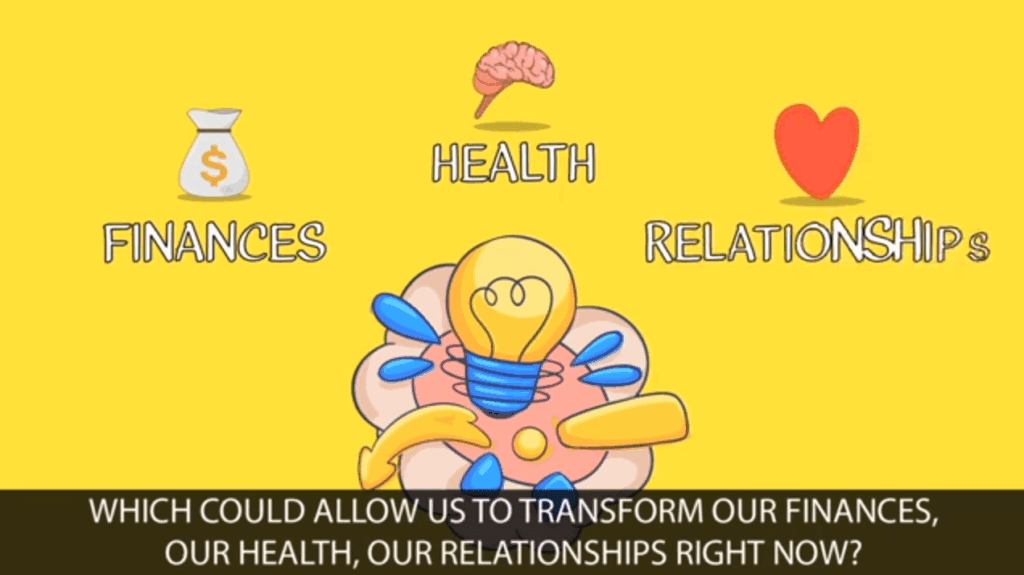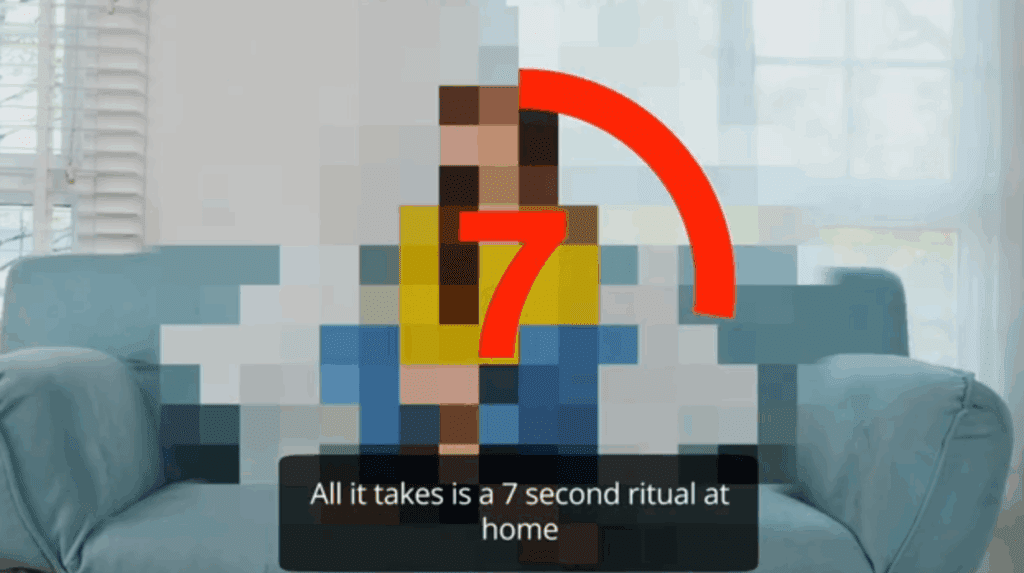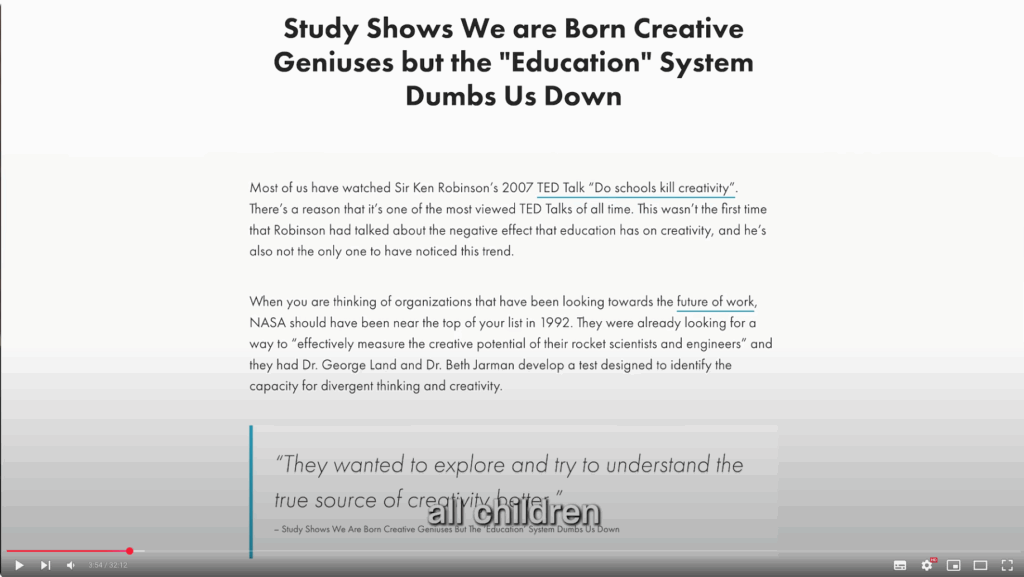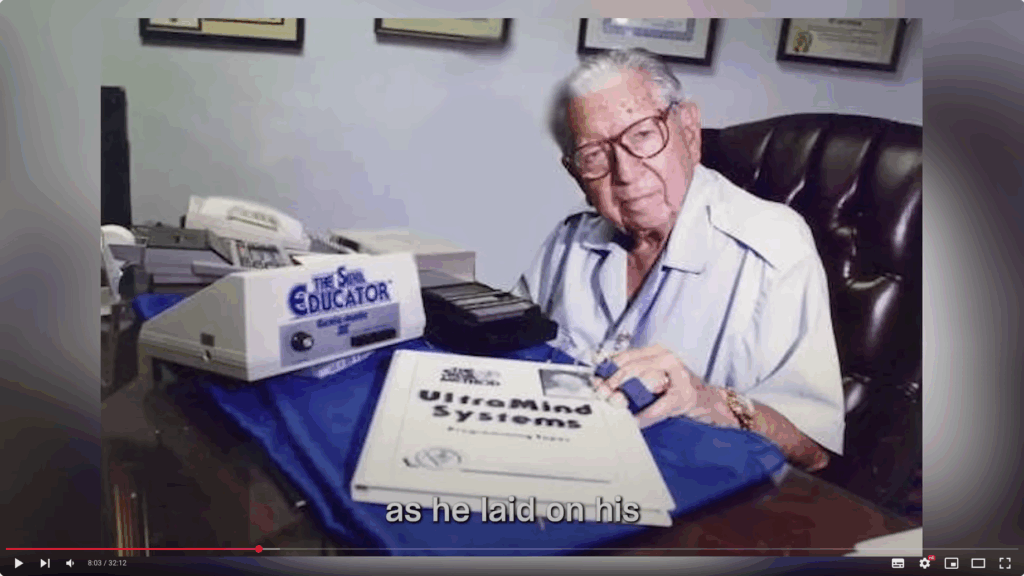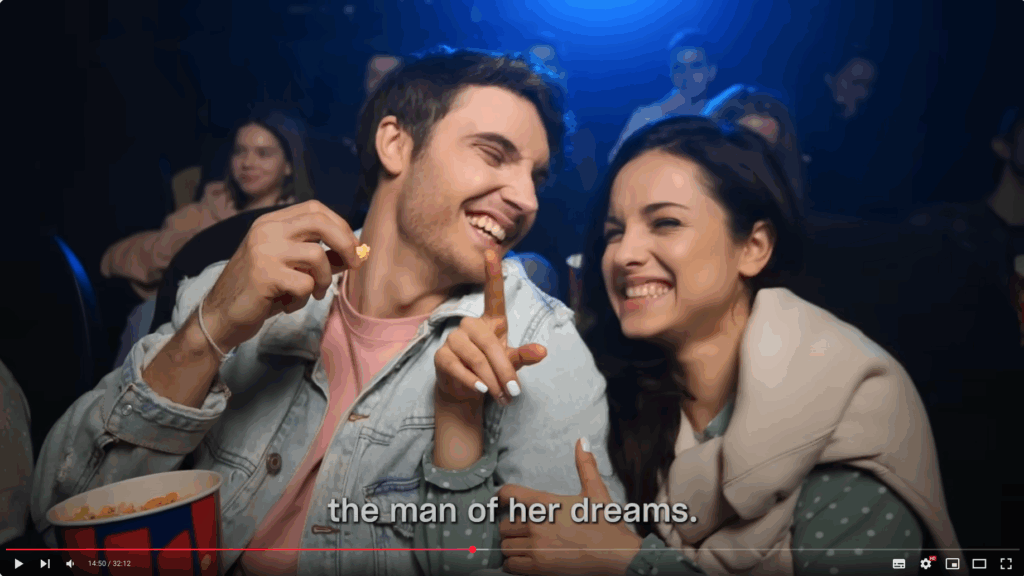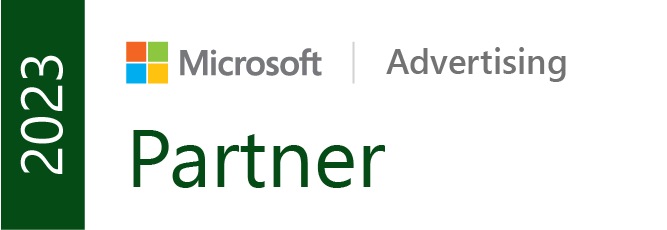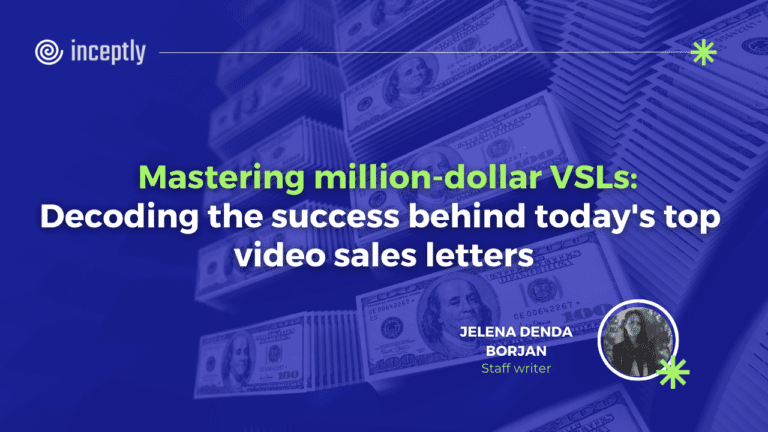
Ever watched a sales video that had you so hooked you forgot you were being sold to?
That’s not a coincidence. That’s the magic of a carefully crafted VSL (Video Sales Letter) working its persuasive power on you.
I’ve been analyzing some of the most successful VSLs circulating online today, and I noticed something fascinating: despite their different products, they’re all leveraging psychological triggers and structural elements that have been quietly generating millions in sales for decades.
When GlucoTrust opens with a father collapsing at his daughter’s wedding, or GeniusWave asks “Is Elon Musk a genius?”, or Silva Ultramind references forgotten NASA studies—these aren’t random choices. These are master marketers pulling psychological levers that have been proven to work time and again.
I’m talking about the art and science of creating video sales letters that don’t just capture attention but maintain it long enough to drive massive conversion. In direct response marketing, the difference between a mediocre VSL and a great one can literally mean millions in revenue.
What makes these particular VSLs so powerful? It’s their expert application of core persuasion principles: emotional storytelling, curiosity gaps, unique mechanisms, and strategic offer presentation—all carefully orchestrated to lead viewers from interest to action.
Wanna scale VSL traffic?
We can help you scale and create VSLs that actually sell 💰
Book a free VSL strategy session here:Let me show you how today’s top marketers are using these techniques to create VSLs so compelling that people willingly watch for 20, 40, even 60 minutes before buying.
The psychology behind million-dollar VSLs
Before we dive into specific examples, let’s understand the psychological foundation that makes VSLs work in the first place.
The most successful VSLs operate on a simple principle: emotion drives action. While we like to think of ourselves as rational beings, neuroscience shows that our decisions are primarily emotional, later justified with logic.
This is why all three VSLs we’ll analyze begin with emotion-triggering elements:
GlucoTrust opens with a heart-wrenching story of a father collapsing at his daughter’s wedding
GeniusWave taps into our curiosity and desire for genius-level abilities
Silva Ultramind plays on our fascination with untapped human potential and NASA research
What’s equally important is how these VSLs maintain engagement. They create what copywriters call “an open loop”—introducing questions or scenarios that viewers need resolution for. Your brain literally won’t let you leave until that loop is closed.
As legendary copywriter Eugene Schwartz said, “The greatest mistake marketers make is trying to create demand.” These VSLs don’t try to create new desires—they tap into existing ones: the desire for health, for mental superiority, for untapped potential. They simply connect those universal desires to their specific solutions.
The structure that sells: Breaking down VSL architecture
One of the most counterintuitive aspects of successful VSLs is their length. In a world of shrinking attention spans, how do hour-long videos drive millions in sales?
The GlucoTrust VSL runs nearly 60 minutes, with the actual offer not appearing until the 40-45 minute mark. Yet it’s generated estimated millions in revenue.
Why? Because when people are genuinely interested in solving a problem, they’ll give you their attention. As direct response pioneer Gary Halbert once said, “The more you tell, the more you sell.”
Let’s look at the structural elements that make these VSLs so compelling:
The pattern-breaking hook: All three VSLs begin by disrupting expectations
The emotional bridge: They quickly transition to emotional territory
The curiosity escalation: They introduce mysterious elements that keep viewers watching
The unique mechanism: Each presents a proprietary solution unavailable elsewhere
The strategic offer placement: The actual product offer comes only after thorough groundwork
This structure isn’t accidental—it’s deliberately engineered to maximize conversion by first creating emotional investment before asking for the sale.
Let’s dissect these million-dollar messages and extract their secrets.
Case study #1: GlucoTrust and the power of story
GlucoTrust sells a blood sugar supplement. Boring, right? Except their VSL has generated tens of millions in revenue by keeping viewers glued to an hour-long presentation.
How? By masterfully deploying what I call “emotional storytelling architecture.”
GlucoTrust’s VSL offers a masterclass in storytelling within direct response. Let’s decode what makes it work:
The power of the personal crisis hook
The VSL opens with a dramatic countdown and immediately thrusts us into what should be a joyous occasion—a father walking his daughter down the aisle. Within seconds, this perfect moment shatters as the father collapses from a diabetic emergency.
“It should have been one of my proudest moments as a father. Walking my sweet angel Natalie down the aisle on her wedding day. Instead, it was about to turn into a life-shattering nightmare.”
This opening accomplishes something crucial: it creates what marketers call a “future-pacing nightmare,” showing viewers a terrifying outcome they want to avoid. For the target audience (people with diabetes or prediabetes), this instantly creates emotional investment.
This is what copywriters call a “Garden of Eden” moment – a perfect, joyful scenario anyone can relate to.
What follows is a masterclass in visual storytelling:
A glass shattering (visual metaphor for the moment breaking)
A heartbeat monitor flatline (signaling life-threatening danger)
The father collapsed on the floor
His hand was clutching his chest
The daughter’s panicked cries: “Daddy. Oh my god, Daddy. Someone call an ambulance.”
This sequence does something powerful: it creates immediate emotional stakes that go far beyond health. It’s not just about blood sugar problems; it’s about ruined family moments, public embarrassment, and becoming a burden to loved ones.
The escalating crisis and transition to the story
The next section deepens the crisis. We hear ambulance sirens, see medical staff rushing, and get the doctor’s grave news: “Mrs Walker, your husband has severe artery damage. There’s hardly any blood flow in his legs.”
These elements paint a vivid picture of a family thrown into chaos, establishing the seriousness of the situation and its devastating impact.
The VSL then transitions from this crisis moment to introduce the protagonist, James Walker – a 53-year-old high school science teacher and independent health researcher from Ocean City, Maryland, who struggled with high blood sugar, weight gain, and type 2 diabetes.
We learn about his worsening condition, his mother’s death from diabetes complications, and his hospitalization, facing the possibility of amputation. This creates a complete backstory that makes the opening crisis scene even more impactful.
The hero’s journey to discovery
Instead of simply listing product benefits, GlucoTrust structures its pitch as a compelling hero’s journey:
The struggle: James tries various diets, exercises, and alternative treatments, but nothing works.
The quest: Determined to find a solution, he researches at a university library.
The discovery: He uncovers a buried study by Dr. Kumar about beta cell regeneration and natural compounds.
The mentor: James meets Dr. Kumar, who shares his experience living with the Hunzas, a remote tribe known for exceptional health and longevity.
The secret: Dr. Kumar reveals the key to the Hunzas’ health is a special brew containing “gurmar” or Gymnema Sylvestre.
The transformation: After perfecting a formula, James begins sharing his discovery with friends and family, who experience remarkable results.
The mission: Seeing these results, James partners with a supplement company to make GlucoTrust available to everyone.
This narrative structure keeps viewers engaged because our brains are wired to follow stories to completion. We need to know how it ends.
The unique mechanism: A contrarian approach
What makes GlucoTrust particularly effective is its contrarian approach to the problem of diabetes.
If you have blood sugar issues and go to a doctor, what will they tell you? Diet and exercise. Cut the soda, cake, and pizza. But GlucoTrust takes a different angle – one that’s much more appealing to their market.
According to the VSL, the real problem isn’t in the pancreas itself but in the beta cells that live on it. These cells produce insulin, but when overworked, they burn out. The VSL claims that Dr. Kumar discovered that these cells can be regenerated through specific natural compounds.
This unique mechanism accomplishes two critical things:
It offers hope where conventional wisdom suggests a lifetime of struggle
It provides a solution that doesn’t require the painful lifestyle changes people resist
Twisting the knife: Targeting core emotional wounds
The VSL doesn’t just address the surface-level health issues of diabetes. It deliberately targets deeper emotional wounds:
For women, it shows footage of an overweight woman in contrast with a slim woman, tapping into insecurities about appearance and desirability.
For men, it directly mentions erectile dysfunction, striking at core wounds related to masculinity and virility.
For everyone, it emphasizes the fear of becoming a burden on family, tapping into deep guilt and shame about dependency.
These aren’t just pain points; they’re core identity issues that create much stronger emotional resonance than simply listing symptoms.
The villain: Big Pharma
Every compelling story needs a villain, and GlucoTrust positions Big Pharma in this role perfectly.
The VSL claims a large pharmaceutical company deliberately buried Dr. Kumar’s study to protect their diabetes medication profits. This creates what copywriters call a “conspiracy angle” – positioning the viewer and presenter as allies against a powerful enemy.
This approach accomplishes several things:
It explains why this “miracle solution” isn’t already mainstream
It creates an us-versus-them dynamic that builds trust with the presenter
It taps into existing skepticism about pharmaceutical companies
Curiosity hooks throughout
The VSL maintains engagement through strategic curiosity hooks – intentionally withholding information to keep viewers watching:
It references a “30-second bedtime ritual” long before revealing what it is
It mentions a “secret ingredient” used by the Hunza people
It hints at a “hidden reason” why other treatments fail
These curiosity gaps create psychological tension that can only be resolved by continuing to watch.
Key takeaways from GlucoTrust’s approach
What can we learn from this masterclass in emotional storytelling?
Open with emotion, not information: Begin with a relatable scenario that engages emotions before introducing product details.
Structure your pitch as a hero’s journey: Take viewers through a compelling narrative arc rather than simply listing benefits.
Offer a contrarian mechanism: Position your solution as different from conventional wisdom in a way that’s appealing to your market.
Target core identity wounds: Connect your product to deeper emotional needs beyond surface-level problems.
Create a villain: Position your product against a common enemy to build an alliance with viewers.
Use strategic curiosity gaps: Intentionally withhold key information to maintain engagement.
If you’re thinking, “but my product isn’t health-related,” that misses the point. These principles work across industries. A financial product could open with a retirement party turning sour. A relationship course could begin with a marriage proposal gone wrong. The emotional architecture remains effective regardless of what you’re selling.
Wanna scale VSL traffic?
We can help you scale and create VSLs that actually sell 💰
Book a free VSL strategy session here:Case study #2: GeniusWave and the 16-word sales formula
While GlucoTrust excels at emotional storytelling, GeniusWave (a brain enhancement audio program) demonstrates the power of structural clarity through its perfect implementation of Evaldo Albuquerque’s “16 Word Salesletter” framework.
This structure follows a simple but powerful formula:
“This New Opportunity is the key to Desire and is only attainable through my New Mechanism.”
Let’s see how they execute this:
The power of structural simplicity
The VSL opens with a provocative question: “Is Elon Musk a genius?” This immediately creates what copywriters call a “pattern interrupt”—something unexpected that breaks through attention filters.
Within seconds, they introduce their Big Idea: everyone has a dormant “genius brain” that can be activated.
This establishes the core components of the 16-word framework immediately:
New opportunity: Activating your dormant “genius brain”
Desire: Achieving extraordinary success, luck, and transformation
New mechanism: A 7-minute audio “Genius Wave”
What’s remarkable is how clearly these elements are articulated. There’s no confusion about what’s being offered or why it matters. The entire hour-long presentation is essentially an expansion of these 16 words.
Creating the new opportunity
The brilliance of GeniusWave’s approach is how it positions brain enhancement not as self-improvement (a crowded market) but as “activating a dormant genius brain” – something that feels both novel and accessible.
“But what if there was a way to activate this genius in you, too?”
This framing creates what copywriters call a “curiosity gap” – that psychological itch we need to scratch by learning more. It’s not about becoming smarter; it’s about unlocking what’s already there – a subtle but crucial difference that makes the opportunity feel both new and attainable.
The VSL reinforces this positioning by comparing “everyday smart” with “genius-level thinking,” drawing a clear line between conventional approaches and their solution.
What makes this approach powerful is how it connects to universal desires. Notice how the VSL doesn’t focus on just one benefit (like “get smarter”) but instead touches on multiple desire paths:
Financial improvement
Better relationships
Improved health
Enhanced creativity
“Magical” good luck
This is brilliant positioning—whatever your primary motivation, GeniusWave seemingly addresses it.
The mechanism breakthrough
The heart of any effective VSL is its mechanism – the “how it works” element that makes the claims believable. GeniusWave introduces its 7-minute sound wave as a proprietary technology that activates theta brain waves:
“We turned one hour of brain entrainment into a seven-minute sound wave.”
Notice how specific this is. Not “about 10 minutes” or “a short audio.” Exactly seven minutes. This specificity creates credibility and makes the abstract concept of “brain entrainment” feel tangible and real.
They further enhance believability by contrasting their solution with alternatives:
“Here are the four ways we know for a fact… #1 Meditation, #2 Wake up at 4 am, #3 Biofeedback machine… #4 You can use a special sound wave… This is the easiest way by far…”
This comparative framework elevates their solution by acknowledging alternatives but demonstrating why theirs is superior – a powerful persuasion technique.
Key takeaways from GeniusWave’s approach
The GeniusWave VSL teaches us:
Structural clarity beats fancy production: A clear sales argument following the 16-word framework provides a backbone for everything else.
Position solutions as opportunities, not fixes: Frame your offering as unlocking something desirable rather than fixing something broken.
Be absurdly specific about your mechanism: Concrete details (7 minutes, 30-second ritual) create believability.
Create contrast with alternatives: Acknowledge other approaches before showing why yours is better.
These principles apply universally. A weight loss program could position itself as “activating your body’s natural fat-burning system” rather than “helping you lose weight.” A CRM could be “the 3-minute daily ritual that transforms customer relationships” rather than “software that helps with customer management.”
The framework remains powerful regardless of what you’re selling.
Frame your solution as a “New Opportunity” that delivers on multiple desires, introduce a proprietary mechanism that seems scientific yet simple, and consistently show why your approach is better than all alternatives.
Case study #3: Silva Ultramind and the breakthrough advertising approach
Our third VSL, for Mindvalley’s Silva Ultramind program, demonstrates a sophisticated approach to what Eugene Schwartz called “market sophistication” – matching your message to how aware and jaded your market has become.
Matching market awareness
The personal development market is highly sophisticated – prospects have seen countless promises and are skeptical of new claims. According to Schwartz, such markets require “a new mechanism to make old claims fresh and believable.”
Silva Ultramind does this brilliantly by introducing brain wave states as its mechanism:
“Jose Silva had a crazy idea… as a radio repairman, he knew that if you reduce the resistance of a wire, more electricity flows through it, so he wondered what I could do to reduce the resistance in the human mind.”
This analogy is genius – it takes something familiar (electrical resistance) and uses it to make a complex concept (brain wave alteration) feel intuitive and credible.
The VSL then builds scientific credibility with specific terminology about beta, alpha, and theta waves, measured by “EEG machines.” This technical language signals expertise and makes the promised benefits more believable.
The gradualization technique
What makes Silva Ultramind particularly effective is how it builds belief in stages – what Schwartz calls “gradualization.”
Notice the progression:
Establish common ground (2:50-3:20):
“98% of the kids scored at creative genius levels… You had that same power when you were a young kid, too.”
Introduce problem (3:20-3:45):
“Five years later… Only 30% of the children scored as creative geniuses.”
Scientific framework (4:22-5:20):
Introduces brain waves and EEG measurements
Solution introduction (19:29-20:00):
“In 2020, we took Jose Silva’s most powerful two-day seminar, Silver Ultramine, and we transformed it into an online program.”
This step-by-step approach leads viewers from what they already believe to what the seller wants them to believe – a far more effective approach than making bold claims immediately.
The proof hierarchy
Silva Ultramind also excels at what I call “proof stacking” – layering different types of evidence to create an unshakeable belief:
Scientific proof:
NASA studies of children’s creativity
EEG measurements of brain waves
Research on different consciousness states
Historical proof:
Edison’s techniques for accessing creativity
Silva’s development process over the decades
Track record with millions of practitioners
Contemporary proof:
Personal stories of transformation
User testimonials of specific results
Current applications in modern contexts
This multi-layered approach to proof is far more powerful than relying on a single type of evidence. Each layer reinforces the others, creating a belief system that’s difficult to dismiss.
Key takeaways from Silva Ultramind’s approach
The Silva Ultramind VSL teaches us:
Match your message to market sophistication: In educated markets, new mechanisms refresh old claims.
Build belief gradually: Lead viewers step-by-step from what they already believe to your conclusion.
Stack different types of proof: Combine scientific, historical, and contemporary evidence for maximum credibility.
Use familiar analogies for complex concepts: Make new ideas accessible through comparison to known concepts.
These principles work across markets. A B2B software company could introduce a “neural network approach” to data analysis. A fitness product could explain its effectiveness through accessible analogies to everyday experiences.
The common threads: What all successful VSLs share
Despite their different approaches, all three VSLs share key elements that contribute to their success:
1. The strategic use of curiosity
All three VSLs create and maintain curiosity throughout:
GlucoTrust teases a “30-second bedtime ritual” and a “secret ingredient”
GeniusWave hints at a “7-minute sound wave” that activates dormant abilities
Silva Ultramind references a “forgotten NASA study” and brain wave techniques
This methodical use of curiosity keeps viewers watching because our brains are wired to seek closure. As copywriter Joe Sugarman said, “Curiosity is the most powerful force in marketing.”
2. The establishment of a unique mechanism
Each VSL introduces a proprietary method unavailable elsewhere:
GlucoTrust: The special combination of ingredients that work while you sleep
GeniusWave: The 7-minute sound wave that activates theta brainwaves
Silva Ultramind: The systematic method to access the alpha level of the mind
These mechanisms make the promise believable by providing a logical reason why their solution works when others have failed.
3. The emotional storytelling
All three VSLs use personal stories to drive engagement:
GlucoTrust: James Walker’s near-death experience and transformation
GeniusWave: Personal transformation stories of users
Silva Ultramind: Vishen’s journey from sales struggle to success
These stories aren’t just entertaining—they’re strategic tools that help viewers see themselves in the narrative and believe transformation is possible for them too.
4. The strategic offer presentation
None of these VSLs rush to the sale. They all spend significant time building desire and credibility before revealing the product:
GlucoTrust: The offer appears around minute 40-45
GeniusWave: The product is formally introduced deep into the presentation
Silva Ultramind: The program details come only after establishing the method’s credibility
This patience pays off in higher conversion rates because by the time the offer appears, viewers are primed and ready to buy.
The magic behind million-dollar VSLs
The most valuable insight I can share is this: The success of these VSLs doesn’t come from fancy production or technological gimmicks. It comes from a deep understanding of human psychology and decision-making patterns that haven’t fundamentally changed in decades.
In a world obsessed with the latest marketing tactics, sometimes the most powerful tool is a fundamental understanding of how people actually make decisions:
We decide emotionally, then justify logically
We’re drawn to stories more than facts
We value what seems unique and exclusive
We need multiple types of proof before we believe
We want transformation, not just products
The marketers behind GlucoTrust, GeniusWave, and Silva Ultramind understand these principles deeply—and their bank accounts show it.
Now, I’m curious—which of these VSL techniques do you think would work best for your business? And have you found yourself captivated by any of these approaches when watching videos online?
Remember: The difference between a forgotten video and a million-dollar VSL isn’t luck or budget—it’s the strategic application of these timeless principles.
While platforms evolve and attention spans fluctuate, the principles that drive human decision-making remain remarkably stable. The most successful marketers aren’t necessarily using the newest techniques – they’re applying timeless principles in fresh contexts.
As you develop your own marketing, remember that studying successful VSLs isn’t about copying specific scripts or angles. It’s about understanding the psychological frameworks that make them work – frameworks you can adapt to your unique offering.
Want to brainstorm with our team on new ways to scale your business with YouTube Ads (and other performance video platforms)?
Join us for a free YouTube ad brainstorming session👇
Want more content like this?
Don’t miss out on the latest news and updates from the world of Direct Response advertising! Subscribe to our newsletter today 👇

Jelena Denda Borjan, Staff Writer
Drawing from her background in investigative journalism, Jelena has an exceptional ability to delve into any subject, no matter how complex, dig deep, and present information in a clear and accessible manner that empowers readers to grasp even the most intricate concepts with ease.
Like this post? Let's continue the conversation!
Get in touch with us by shooting us a quick email or tagging us on LinkedIn or Instagram, and sharing your thoughts. Your feedback helps us keep our blog relevant and interesting.
Get Our Newsletter
Need Help?
Get in touch with us for an insightful evaluation of your ads + actionable tips to help amp up your direct response revenue

